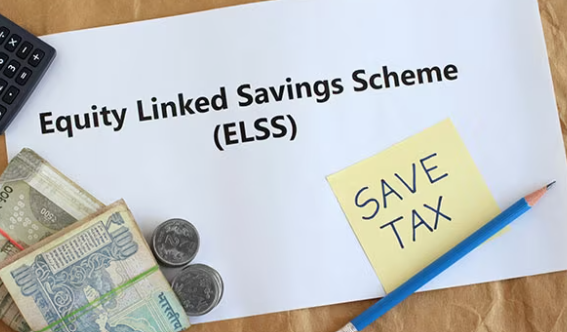How to Save Tax Using Market-Linked Products—ELSS
Tax saving is a priority for most individuals, especially during the financial year-end when everyone is looking for smart ways to reduce their taxable income. While traditional instruments like PPF, NSC, and fixed deposits are commonly used, market-linked products like ELSS (Equity Linked Savings Scheme) are gaining popularity due to their dual benefit of tax saving and wealth creation.
Let’s understand how ELSS works and how you can use it to save tax efficiently.
What is ELSS?
ELSS stands for Equity Linked Savings Scheme. It is a type of mutual fund scheme that invests primarily in equities or equity-related instruments and qualifies for tax deductions under Section 80C of the Income Tax Act.
Key features of ELSS:
- Tax Deduction: Investments up to ₹1.5 lakh in a financial year qualify for tax benefits under Section 80C.
- Lock-in Period: ELSS has a lock-in of just 3 years, the shortest among all 80C options.
- Equity Exposure: Since the money is invested in the stock market, it has the potential for higher returns compared to traditional instruments.
How ELSS Helps You Save Tax
Here’s how ELSS can help reduce your tax burden:
✅ Claim Deduction under Section 80C
You can invest up to ₹1.5 lakh in ELSS in a financial year and claim this amount as a deduction from your gross total income. For example, if your annual income is ₹7,00,000 and you invest ₹1,50,000 in ELSS, your taxable income reduces to ₹5,50,000.
✅ Shorter Lock-in Period
Compared to PPF (15 years), NSC (5 years), and Tax-Saver FDs (5 years), ELSS has the shortest lock-in of just 3 years, which makes it more liquid and flexible.
✅ Better Returns
ELSS has the potential to deliver higher returns over the long term due to equity exposure. While it carries market risk, historical data suggests that ELSS funds have performed well over time compared to fixed-income instruments.
How to Invest in ELSS
You can invest in ELSS in two ways:
- Lump Sum: Invest a one-time amount.
- SIP (Systematic Investment Plan): Invest monthly and benefit from rupee cost averaging.
Pro tip: Starting a SIP early in the financial year helps you avoid last-minute rush and spreads your investment over the year.
Things to Keep in Mind
- Market-Linked Risks: Since ELSS invests in equities, returns are not guaranteed. Invest with a long-term horizon.
- Capital Gains Tax: Returns above ₹1 lakh in a financial year are taxed at 10% as long-term capital gains (LTCG).
- Choose Funds Wisely: Look at the fund’s past performance, fund manager’s expertise, and expense ratio before investing.
Conclusion
ELSS is one of the best tax-saving options for individuals who are comfortable with some market risk and are looking for higher returns along with tax benefits. With a 3-year lock-in and equity growth potential, ELSS strikes a balance between tax efficiency and wealth creation.
So, if you’re planning your taxes this year, don’t overlook ELSS – a smart, modern way to grow your wealth and save tax at the same time.

